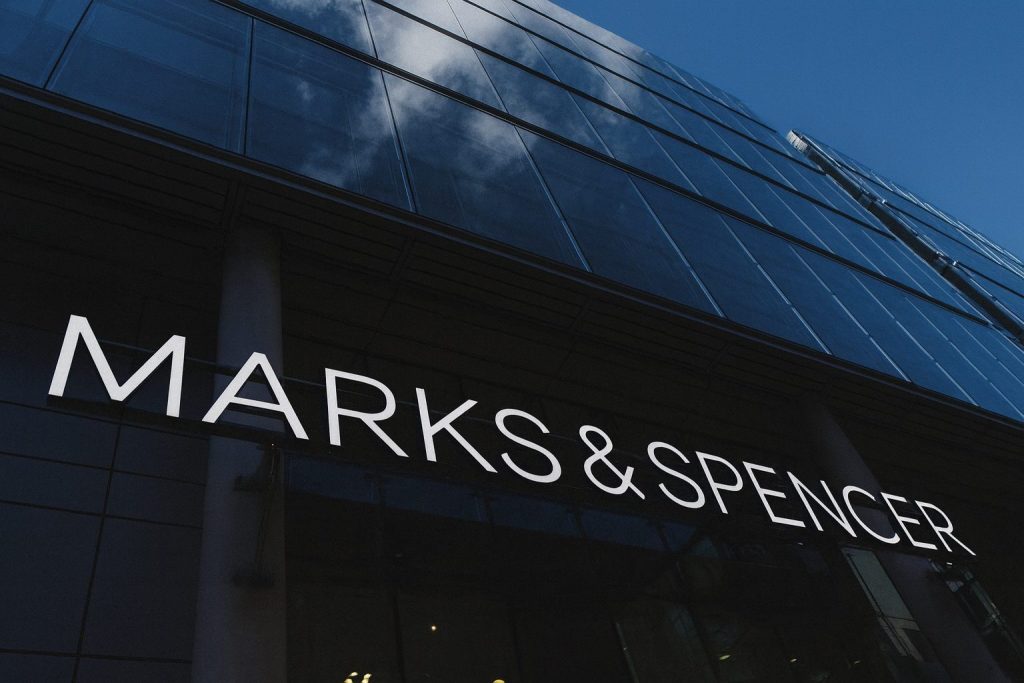London, 28 November 2025 – Shares in SSE PLC (LON:SSE) eased slightly on Friday, as investors digested a fresh batch of headlines on wind‑farm shutdown payments, UK energy bill reforms and the company’s recently unveiled £33 billion network‑focused investment plan.
SSE share price today: mild pullback after record highs
By late morning in London, SSE PLC was trading around 2,186p, down roughly 0.7% from Thursday’s close of 2,202p. The stock has traded in an intraday range of about 2,179p to 2,216p, according to London Stock Exchange data compiled by the Financial Times. [1]
That leaves SSE:
- Around 5% below its 52‑week high of 2,307p, set on 12 November 2025
- Well above its 52‑week low of 1,446.89p from 6 March 2025 [2]
- With a market capitalisation of roughly £26.5 billion and a trailing P/E ratio near 25× [3]
Data from TradingView shows SSE shares up about 16% over the past month and more than 23% over the last year, reflecting a powerful rerating since early 2025 and an especially sharp move following the company’s strategic update on 12 November. [4]
Friday’s modest decline follows several sessions of volatile but generally positive trading as investors weigh the long‑term promise of SSE’s grid‑heavy growth plan against regulatory and valuation questions.
What’s new on 28 November 2025?
1. Wind‑farm shutdown payouts: £45 million in six months
The most eye‑catching SSE headline today comes from Bloomberg, which reports that SSE has received about £45 million over six months for being paid to switch off its wind farms, a practice known as constraint payments in Britain’s power system. [5]
Constraint payments arise when:
- Wind farms are generating electricity
- But the transmission network cannot move that power to where it is needed
- So the system operator pays generators to curtail output, rather than overloading the grid
According to the report, those shutdown payouts have been “rising sharply”, reflecting a mix of increasing renewable capacity and grid bottlenecks. [6]
From a stock‑market perspective, this story cuts both ways:
- Short term, it highlights an additional income stream for SSE’s renewables arm, effectively compensating for lost generation.
- Medium to long term, it underlines the urgency of grid investment – something SSE is explicitly targeting with its new £33 billion plan. [7]
Today’s article will likely reinforce investor focus on how quickly SSE can deliver new transmission and distribution capacity to reduce such inefficiencies – and whether regulators will continue to allow these payments at current levels.
2. Budget 2025: SSE welcomes UK shift on energy bill costs
A second important theme for SSE today is the UK Chancellor’s Budget, which includes measures to make household energy bills fairer and support clean power investment.
SSE’s chief executive Martin Pibworth publicly backed the Budget in a company statement published on 26 November, calling it a positive step towards fairer bills while keeping the focus on building a cleaner power system. [8]
Key points from SSE’s stance:
- Moving some legacy policy costs off bills and into general taxation should let households see the benefits of energy infrastructure investment sooner. [9]
- SSE argues this helps support the electrification of the economy, which is central to its long‑term growth story in networks and renewables. [10]
- The company stresses that stable, predictable regulation will be critical to keeping financing costs low for the massive capital programme ahead. [11]
Those comments have been picked up in fresh coverage today, including a stakeholder reaction article in The Phoenix Newspaper dated 28 November 2025, where Pibworth is quoted again welcoming the Budget’s focus on lower bills and cleaner power. [12]
Separately, UBS has today flagged “utilities sector winners” from a planned £150‑plus reduction in household electricity bills, noting the measures are broadly supportive for clean‑energy investment. While the bank sees Centrica as a modest direct beneficiary, it reiterated a Neutral rating on SSE with a 2,350p price target, framing the Budget changes as supportive for the wider low‑carbon investment landscape. [13]
The bigger backdrop: SSE’s £33bn “Transformation for Growth” plan
Today’s news lands just over two weeks after SSE laid out one of the most ambitious investment programmes in the European utility sector.
On 12 November 2025, SSE announced a fully funded £33 billion five‑year plan running to 2029/30, under the banner “Transformation for Growth”. [14]
Headline elements include:
- Around £27 billion (≈80%) directed to regulated UK electricity networks (transmission and distribution)
- Around £6 billion (≈20%) selectively invested in renewables and flexibility, including large projects like Dogger Bank offshore wind and flexible gas‑fired generation [15]
- A targeted 7–9% compound annual growth rate in adjusted EPS, aiming for 225–250p of earnings by 2029/30 [16]
- A continued progressive dividend policy, with management targeting 5–10% annual dividend per share growth from a 64.2p baseline in 2024/25 [17]
Funding for the plan comes from:
- Operating cash flow and higher (but still investment‑grade) debt
- A £2 billion equity placing completed in mid‑November
- Around £2 billion of asset disposals over the period [18]
The market initially applauded the strategy. SSE’s shares surged more than 11% to a record high on 12 November after Reuters reported the details of the new plan and equity raise, helped by the clarity it provided on both growth and balance‑sheet trajectory. [19]
Today’s Budget‑related commentary and the Bloomberg constraint‑payment story both slot directly into this narrative:
- Grid bottlenecks and curtailment payments demonstrate why significant network investment is needed. [20]
- Policy moves to shift legacy costs off bills and reduce electricity charges aim to keep public support intact as billions are spent on grids and clean generation. [21]
For long‑term investors, the question is less whether investment is needed and more how much of the resulting regulated asset growth turns into durable, shareholder‑friendly returns.
Fundamentals check: earnings, leverage and dividends
SSE’s latest half‑year results, released alongside the strategic update, showed a mixed picture:
- Adjusted pre‑tax profit fell about 28% year‑on‑year to £521.5 million for the six months to 30 September 2025, largely due to lower output and adverse weather in the generation portfolio. [22]
- Revenue came in around £4.63 billion, slightly ahead of analyst expectations, with EBIT increasingly skewed towards networks. [23]
- Net income for the half year of about £292 million was down sharply versus the prior period, reflecting volatile renewables performance and timing effects. [24]
At the current share price, FT and TradingView data imply: [25]
- Trailing P/E: ~25×
- Dividend yield (on annualised 64.4p): just under 3%
- Next ex‑dividend date:4 December 2025, with payment scheduled for 30 January 2026 [26]
The combination of moderate yield, high investment intensity and a relatively full earnings multiple helps explain why some brokers are becoming more valuation‑sensitive after the recent rally.
Street view: bullish on strategy, split on valuation
Broker and analyst commentary through November has been broadly positive on SSE’s strategy but increasingly divided on valuation as the stock has climbed.
- RBC has described SSE as “primed and ready” for growth under the new five‑year plan, highlighting the accelerated regulated asset base (RAB) expansion and the visibility provided on EPS and dividends. [27]
- Barclays recently raised its price target following the strategic update, citing better business and financial clarity, though the full note is behind a paywall. [28]
On the more cautious side:
- Citi downgraded SSE to “sell” on 14 November, even while raising its target price to 1,997p. The bank noted that the equity raise removed an overhang and visibility improved, but argued that the shares had re‑rated by about 40% in two months and were no longer cheap. [29]
- UBS followed up on 27 November by cutting SSE from “buy” to “neutral” after a roughly 50% rebound from February lows, even as it lifted its 12‑month target from 2,200p to 2,350p. [30]
UBS’s note, summarised by Proactive Investors and Alliance News, highlights several key issues: [31]
- The firm still models strong EPS of around 233p in 2030, broadly aligned with SSE’s own guidance.
- It sees scope for higher allowed returns in SSE’s transmission business under the next RIIO‑T3 price control, potentially up to about 6% real versus roughly 5.6% today. [32]
- However, UBS worries that some of the most optimistic capital‑expenditure assumptions – particularly around major new overhead line consents – could be delayed, and it views the stock as “no longer cheap versus the sector” at current levels. [33]
Consensus data compiled by TradingView shows an overall “buy” skew among analysts, with a target range roughly between 1,997p and 2,600p, bracketing today’s price of about 2,18x. [34]
Ownership moves: JPMorgan builds a 5.36% stake
Another recent development is the arrival of JPMorgan Chase & Co. as a sizable shareholder.
On 27 November 2025, SSE disclosed a TR‑1 notification showing JPMorgan crossing the 5% voting rights threshold, with a combined 5.36% position split between shares and various financial instruments, including rights to recall lent shares and cash‑settled swaps. [35]
For investors, this signals:
- Growing institutional interest in SSE’s long‑term story, particularly in its regulated networks
- Additional liquidity support for the stock following the November equity placing
While a 5% stake does not imply activist intent, it adds another large, sophisticated voice to future shareholder discussions on capital allocation and strategy.
Key risks and catalysts investors are watching
As of 28 November 2025, several near‑term catalysts and risk factors stand out for SSE:
- RIIO‑T3 transmission price control (Ofgem)
- Final decisions on allowed returns and investment parameters for the next transmission period are expected in early December.
- UBS and others see potential for a modest uplift in allowed returns, but any negative surprise would likely hit sentiment given how central networks are to SSE’s growth plan. [36]
- Budget follow‑through and bill‑reduction mechanics
- The government’s planned cut of around £150 per household in electricity bills, and the extension of consultations on Renewable Obligation indexation, may shift the economics of certain legacy renewables portfolios. [37]
- SSE appears broadly supportive, but details on which costs move into general taxation – and how quickly – will matter for both customers and investors. [38]
- Execution on the £33bn capex plan
- Delivering a trebling of regulated asset value in five years will require successful permitting, supply‑chain management and cost control. [39]
- Slippage on major projects – especially big new transmission lines or offshore connections – could affect both earnings trajectories and market confidence.
- Dividend and balance‑sheet discipline
- Management has committed to keeping net‑debt‑to‑EBITDA below about 4.5× through the plan and to growing dividends 5–10% per year. [40]
- Any hint that leverage is drifting higher than planned, or that dividend growth might be slowed, would likely be scrutinised closely given the capital intensity of the strategy.
- Public and political scrutiny of constraint payments
- Today’s £45 million shutdown‑payout figure could become a talking point in the wider debate over who pays for grid constraints and how quickly networks should be upgraded. [41]
- While constraint payments benefit SSE in the short term, reforms that reduce them over time could be both a headwind (less curtailment income) and an opportunity (stronger case for accelerated network investment).
Bottom line
On 28 November 2025, SSE’s share price is taking a breather, trading modestly lower after a strong run that has pushed the stock close to the upper end of its 52‑week range.
Today’s news flow – from £45 million in wind‑farm shutdown payments to SSE’s supportive stance on the UK Budget’s energy bill reforms and UBS’s sector note – reinforces the central themes of the SSE investment story:
- A decisive pivot toward regulated electricity networks, underpinned by a huge, fully‑funded capex programme
- A supportive but evolving policy environment, focused on lower bills and decarbonisation
- A valuation that now reflects much of the good news, leaving the market more sensitive to execution and regulatory details
For long‑term followers of the stock, the coming weeks – with RIIO‑T3 decisions and the December ex‑dividend date – should provide clearer signals on how much of SSE’s ambitious plan will translate into sustained earnings and dividend growth.
References
1. markets.ft.com, 2. markets.ft.com, 3. markets.ft.com, 4. www.tradingview.com, 5. www.bloomberg.com, 6. www.bloomberg.com, 7. www.investegate.co.uk, 8. www.sse.com, 9. www.sse.com, 10. www.sse.com, 11. www.sse.com, 12. thephoenixnewspaper.com, 13. www.investing.com, 14. www.investegate.co.uk, 15. www.investegate.co.uk, 16. www.investegate.co.uk, 17. www.investegate.co.uk, 18. www.reuters.com, 19. www.reuters.com, 20. www.bloomberg.com, 21. www.sse.com, 22. www.reuters.com, 23. www.tradingview.com, 24. www.tradingview.com, 25. markets.ft.com, 26. markets.ft.com, 27. www.marketscreener.com, 28. www.marketscreener.com, 29. www.lse.co.uk, 30. www.proactiveinvestors.com, 31. www.proactiveinvestors.com, 32. www.proactiveinvestors.com, 33. www.proactiveinvestors.com, 34. www.tradingview.com, 35. www.investegate.co.uk, 36. www.proactiveinvestors.com, 37. www.investing.com, 38. www.sse.com, 39. www.investegate.co.uk, 40. www.investegate.co.uk, 41. www.bloomberg.com







